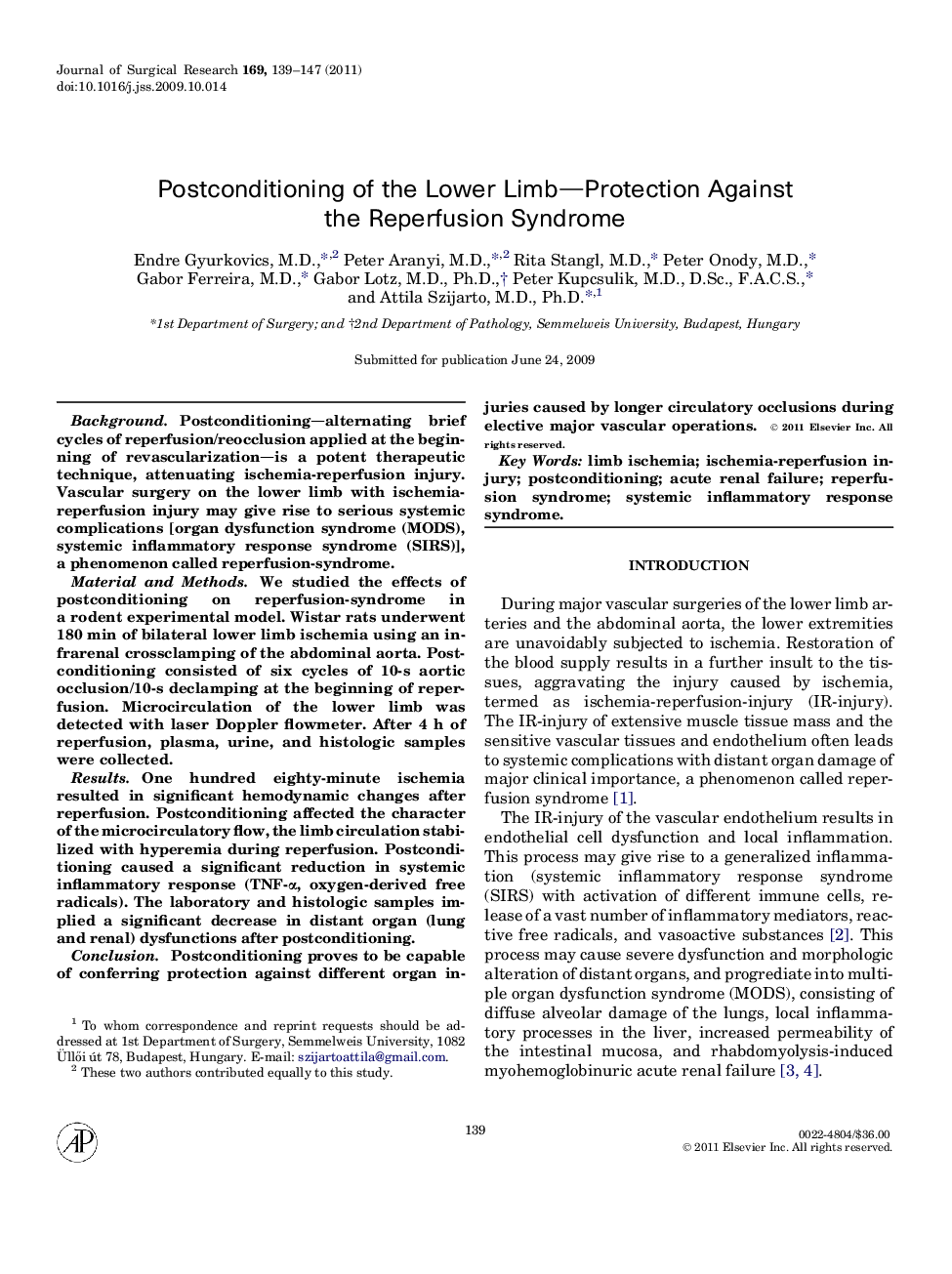| Article ID | Journal | Published Year | Pages | File Type |
|---|---|---|---|---|
| 4302254 | Journal of Surgical Research | 2011 | 9 Pages |
BackgroundPostconditioning—alternating brief cycles of reperfusion/reocclusion applied at the beginning of revascularization—is a potent therapeutic technique, attenuating ischemia-reperfusion injury. Vascular surgery on the lower limb with ischemia-reperfusion injury may give rise to serious systemic complications [organ dysfunction syndrome (MODS), systemic inflammatory response syndrome (SIRS)], a phenomenon called reperfusion-syndrome.Material and MethodsWe studied the effects of postconditioning on reperfusion-syndrome in a rodent experimental model. Wistar rats underwent 180 min of bilateral lower limb ischemia using an infrarenal crossclamping of the abdominal aorta. Postconditioning consisted of six cycles of 10-s aortic occlusion/10-s declamping at the beginning of reperfusion. Microcirculation of the lower limb was detected with laser Doppler flowmeter. After 4 h of reperfusion, plasma, urine, and histologic samples were collected.ResultsOne hundred eighty-minute ischemia resulted in significant hemodynamic changes after reperfusion. Postconditioning affected the character of the microcirculatory flow, the limb circulation stabilized with hyperemia during reperfusion. Postconditioning caused a significant reduction in systemic inflammatory response (TNF-α, oxygen-derived free radicals). The laboratory and histologic samples implied a significant decrease in distant organ (lung and renal) dysfunctions after postconditioning.ConclusionPostconditioning proves to be capable of conferring protection against different organ injuries caused by longer circulatory occlusions during elective major vascular operations.
